- Dec 9, 2010
- 16
- 0
- 22
I modeled my chicken house almost directly from this plan several years ago. I will post pictures of my actual coop in the near future. There were several problems I was trying to get around and this coop delivered me from every one of them. It is the best chicken house plan I have ever used. Very easy for the novice with a hammer and shovel to build in a couple of weekends. You could go fancy and opt for redwood siding, or cheap and go painted plywood. The only thing I would change with mine is that I used discarded telephone pole top bars (the ones that support the wires and insulators) and wish that I would have used a treated pole for TERMITES!!! I also made the roof about 10 inches too short for me a standard 8 foot green treated 4-6 inch diameter fence post would be perfect. I poured a stem wall of hand mixed concrete. I bought quikrete in bags, poured them into the form dry and wet them down. It works and is very durable, but not really needed. The entire project cost me $500. If a neighbor is tearing down a redwood fence, you could use that. I built a 30 gallon waterer from a galvanized trash can and a Plasson brooder house waterer. I added a small feed and storage room that is vermin proof that is accessed outside. I have two 30 gallon trash cans in it which store enough feed for about six months for 20 hens. I also added a nest box with four stalls that is accessed outside via a hinged lid. I do as the article suggests and throw feed directly on the floor so that the hens will scratch. Believe it or not, chicks need to be taught the art of scratching or at least forced to do it. The scratching is what keeps the hay and manure from becoming a stinky mess. I do keep a hanging feeder that I feed supplemental layer rations in, but I have it lifted beyond their reach most of the time. If you supply food in a feeder for them, they will never learn to scratch and you will have a house that has matted manure sitting directly atop the hay...and you will need to clean it out. The beauty of this system is that it never stinks, the chickens get all the bonus nutrients from the composting hay and manure, and you do not have to clean it out...just add more hay as needed. I do not allow my hens to free range and don't need to with this coop.
Hope it helps someone.
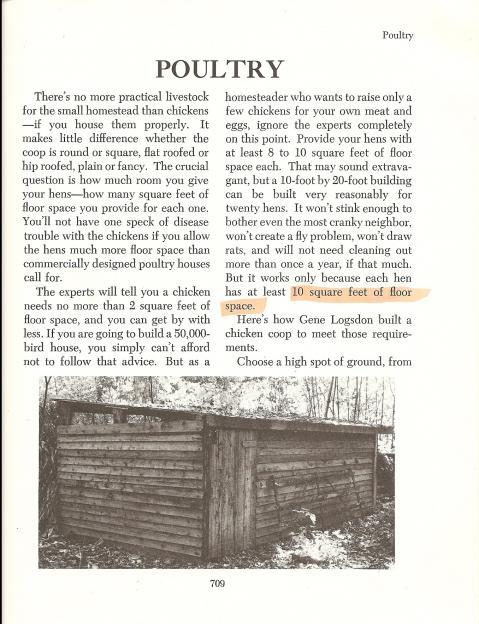
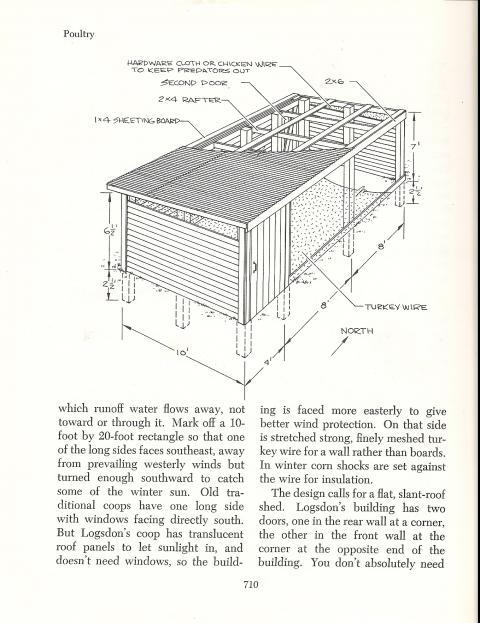
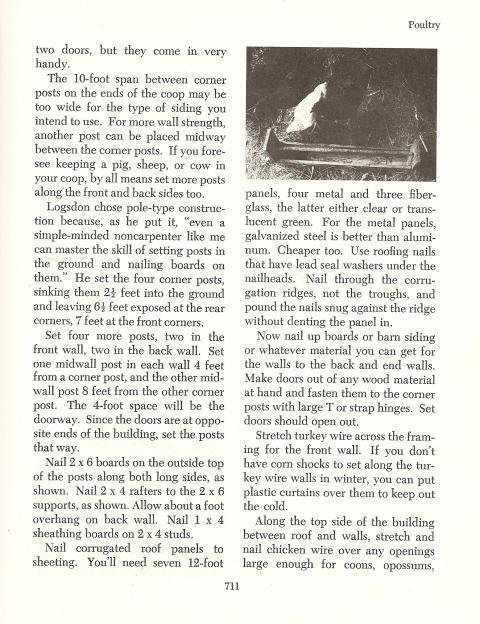
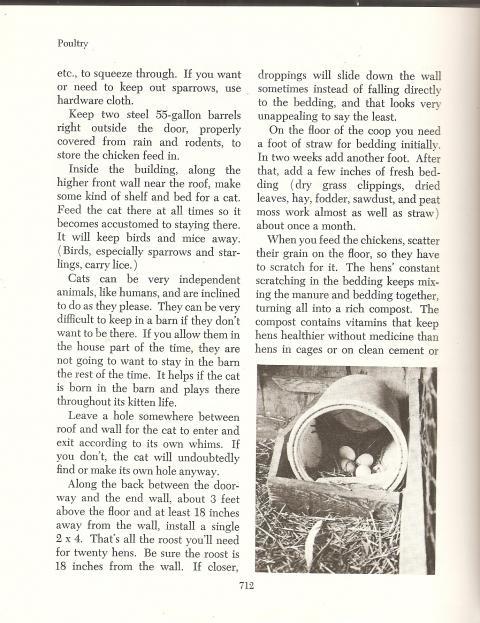
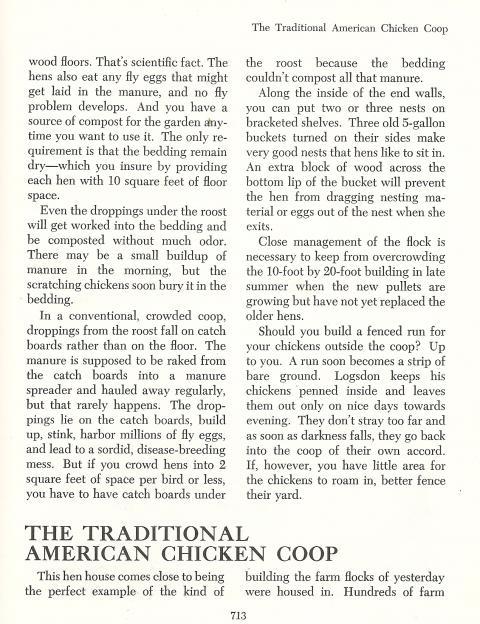
Hope it helps someone.








